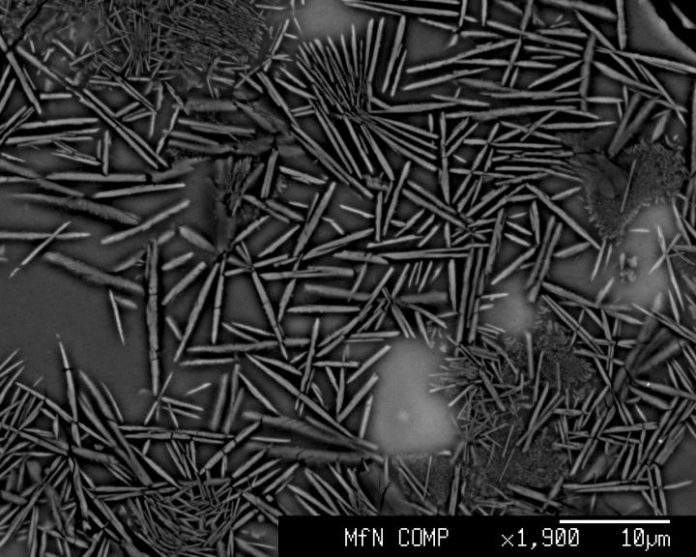
A team of European researchers have discovered a new high-pressure mineral in the lunar meteorite Oued Awlitis 001, named donwilhelmsite [CaAl4Si2O11]
The new mineral donwilhelmsite is the first high-pressure mineral found in meteorites with application for subducted terrestrial sediments and is important for understanding the inner structure of the Earth.
It is mainly composed of calcium, aluminum, silicon, and oxygen atoms and was discovered within shock melt zones of the lunar meteorite Oued Awlitis 001 found in 2014 in the Western Sahara. This meteorite is compositionally similar to rocks comprising the Earth’s continents. Eroded sediments from these continents are transported by wind and rivers to the oceans, and subducted into the Earth’s mantle as part of the dense oceanic crust. While being dragged deeper into the Earth mantle the pressure and temperature increases, and the minerals transform into denser mineral phases.
The newly discovered mineral donwilhelmsite forms in 460 to 700 kilometre depth. In the terrestrial rock cycle, donwilhelmsite is, therefore, an important agent for transporting crustal sediments through the transition zone separating the upper and lower Earth’s mantle.
The team around Jörg Fritz from the Zentrum für Rieskrater und Impaktforschung Nördlingen, Germany and colleagues at the German Research Centre for Geoscience GFZ in Potsdam, Museum für Naturkunde Berlin, Natural History Museum Vienna, Institute of Physics of the Czech Academy of Science, Natural History Museum Oslo, University of Manchester, and Deutsches Zentrum für Luft und Raumfahrt Berlin published their findings in the scientific journal “American Mineralogist“.
This pan-European collaboration was essential to obtain the lunar meteorite, recognize the new mineral, understand its scientific relevance, and to determine the crystal structure of the tiny, the thousands part of a millimeter thick, mineral crystal with high accuracy.
“At the GFZ, we used transmission electron microscopy to investigate microstructural aspects of the samples,” says Richard Wirth from the section “Interface Geochemistry”. “Our investigations and the crystal structure analyses of the colleagues from the Czech Republic once again underline the importance of transmission electron microscopy in the geosciences”.
The new mineral was named in honor of the lunar geologist Don E. Wilhelms.










